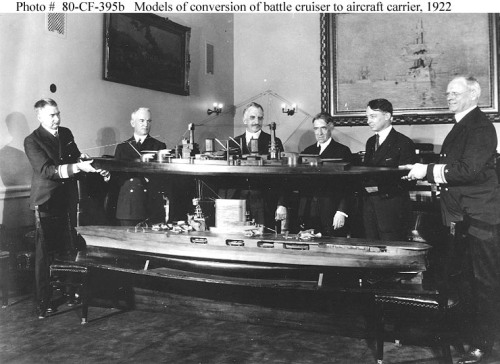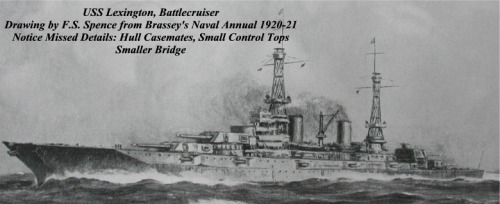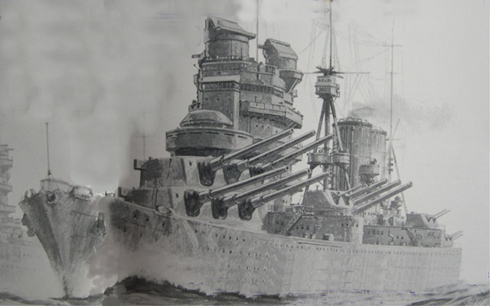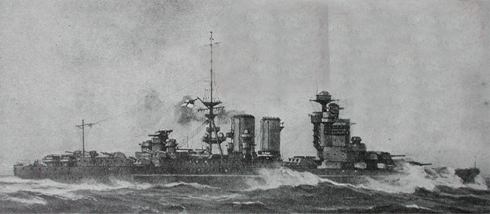Artists Depiction of G3 Battlecruiser
Friends of Padre Steve’s World,
The next few days I will be reflecting on the old year and the coming new year, but tonight I decided to tweak and republish an article from about four years ago dealing with the battle cruisers being built by Great Britain, Japan, and the United States after the First World War. They represented the pinnacle of naval design for their era and would have been far superior to their adversaries had technology and war remained static. As Admiral Ernest King noted:
“Nothing remains static in war or military weapons, and it is consequently often dangerous to rely on courses suggested by apparent similarities in the past.”
As the First World War ended a new Naval Race was heating up. The United States had announced its intention during the war to build a navy second to none while Imperial Japan was making plans for a fleet that would give it superiority in the Western Pacific. The British, though still be far the largest naval power in the world were burdened by the massive costs of war and empire, but also seeking to maintain their naval dominance and to that end they were in the process of building a class of massive super-Dreadnought battleships, and Battle Cruisers.
Much of each powers actions in the coming years would be based on internal politics, foreign policy, and the simple economics of how much each power could afford to spend on their militaries after such a costly war. The result was the Washington Naval Treaty of 1922 which limited the signatories to specific numbers, tonnage, and armaments each Navy would be allowed. Do to those reasons the massive Battle Cruisers planned by Britain, the United States and Japan were canceled. The Japanese and Americans would choose to convert two of their incomplete ships to aircraft carriers, while the British would convert the already completed ships of the Courageous Class battlecruisers (Courageous, Glorious, and Furious) into aircraft carriers as though none of the G3 ships had been laid down.
The ships known as the G3 battle cruisers were first designed by the British Royal Navy as a compliment to the all big gun Dreadnought battleships. The Battle Cruiser concept was for a ship of roughly the same size and firepower as a Battleship, but sacrificed armor protection for greater speed, endurance and range. The United States and Japan joined in the Battle Cruiser race before and during the war. However, Britain the United States had concentrated on building battleships during the war but following the war began to design and build its own classes of massive battle cruisers.
HMS Invincible Blowing Up at Jutland
During the war the weaknesses of the battlecruisers as a type were exposed during the Battle of Jutland where three British Battle Cruisers, the HMS Invincible, HMS Indefatigable and HMS Queen Mary blew up with the loss of most of their crews; of the 3311 officers and sailors on the ships only 26 survived. The HMS Lion was almost lost in a similar manner but the heroic actions of her crew saved her from her sisters fate. The British ships had glaring deficiencies in armor protection and the arrangement of their ammunition magazines and hoists which certainly contributed to their loss. Their German counterparts on the other hand proved much tougher and though all sustained heavy damage while engaging British Battleships and Battle Cruisers, only one the Lützow was lost. She absorbed over 30 hits from large caliber shells and only lost 128 crew members. However, though a battle cruiser Lützow, and other German battle cruisers wer designed for relatively short range operations which meant they neither sacrificed armor protection, speed, or firepower as did the British ships which were designed for missions far and wide, needing more displacement for fuel and crew supplies, often sacrificing armor protection in order to maintain their high speed capabilities.
HMS Hood
As the war progressed other Battle Cruisers were built, the British launched the HMS Repulse and HMS Renown and completed the HMS Hood shortly after the war was over. The Japanese built the four ship Kongo class from a British design, the first of which, the Kongo was completed in a British yard, the others Haruna, Hiei, and Kirishima were built in Japanese yards. The Kongo Class would prove to be the workhorses of the Battle Force of the Imperial Japanese Navy, all seeing significant combat action.
As the powers embarked on the next Naval Race planners and naval architects designed ships of massive firepower, better protection and higher range and speed. All would have been better classed as Fast Battleships, a better description of the Kongo Class or the Hood than previous ships.
The British designed and funded the G3 class in 1921, while the Japanese began work on the Amagi Class, and the United States the Lexington Class. However the construction and completion of these ships as Battle Cruisers was prevented by the Washington Naval Treaty.
The treaty, which was ratified in 1922 limited the United States and Great Britain to a maximum of 525,000 tons in their battle ship fleets and 125,000 tons in aircraft carriers. The Japanese agreed to a limit of 315,000 tons and the French and Italians 175,000 tons each. Tonnage for battleships was limited to a maximum of 35,000 tons with a limitation on guns size to 16 inches. Since the bulk of the ships planned or being built by the US and Japan exceeded those limits they would be effected more than the British whose post war shipbuilding program had not begun in earnest, in fact the G3 Class had just been approved for construction and there is no proof that construction had begun on any of the ships.
The G3 class would have comprised four ships and been similar to the N3 Class Battleships. They were very well balanced ships and would have mounted nine 16” guns in three turrets on a displacement of 49,200 tons and deep load of 54,774 tons. They had an all or nothing protection plan meaning that the armored belt was concentrated in vital areas around the armored citadel, conning tower, turrets and magazines and engineering spaces. Their armor belt would have ranged from 12-14 inches, deck armor from 3-8 inches, conning tower 8 inches, barbettes 11-14 inches, turrets 13-17 inches and bulkheads 10-12 inches. Their propulsion system of 20 small tube boilers powering 4 geared steam turbines connected to 4 propeller shafts would have produced 160,000 shp with a designed speed of 32 knots.
The four ships, none of which were named were ordered between October and November of 1921. Their construction was suspended on November 18th 1921 and they and the N3 Battleships were cancelled in February 1922 due to the limitations of the Washington Naval Treaty. Many concepts of their design were incorporated in the Nelson Class battleships which were a compromise design built to stay within the limits of the treaty.
Amagi Class as Designed, Akagi as Completed (below)
The four planned Japanese Amagi Class ships would have mounted ten 16” guns on a displacement of 47,000 tons at full load. Their propulsion system 19 Kampon boilers powering four Gihon turbines would have given them a maximum speed of 30 knots, They would have had less protection than the G3 ships being more of a traditional Battle Cruiser design. As a result of the Washington Naval Treaty the Japanese elected to convert two of the ships, the Amagi and Akagi to aircraft carriers. Amagi was destroyed on the ways during the great Tokyo earthquake and Akagi was completed as a carrier. The other two vessels were scrapped on the ways. To replace Amagi the Imperial Navy selected the incomplete Tosa Class battleship Kaga.


The United States Navy planned the six ship Lexington Class. These ships would have mounted eight 16” guns on a ship measuring 874 feet long and 105 feet in beam, displacing 43,254 tons at full load, or nearly the size of the Iowa Class battleships. They would have had a maximum speed of 33 knots being powered by 16 boilers which drove 4 GE electric turbines producing 180,000 shaft horse power. Theirs was a massive engineering plant and while the class did not have as heavy armor protection as either the G3 or Amagi classes, they were superior to them in speed as well as endurance. Upon ratification of the Washington Naval Treaty four of the six ships were cancelled and the remaining two, the Lexington and Saratoga competed as aircraft carriers. Had any of the ships been completed as Battle Cruisers it is likely due to their speed that they would have operated primarily with the the carriers that the US Navy built during the 1930s.
One can only speculate what the navies of World War II would have looked like had the Washington and the subsequent London Naval Treaties not been ratified. One can also only imagine how the war at sea would have been different had the ships completed as carriers been completed as Battle Cruisers. It is certain had the Royal Navy, the Imperial Japanese Navy, and the United States Navy Not Converter These ships, that Naval Aviation would have take years, or maybe more than decades to reach its potential.
However that was not to be, of the planned 14 ships of these three classes only three were completed, all as aircraft carriers, ships that helped to forge the future of naval operations and warfare for nearly a century. Thus the uncompleted ships are an interesting footnote in naval history yet have their own mystique.
Yet nothing remains static. The carriers have ruled the waves since December 7th 1941. But the massive aircraft carriers which have ruled the seas since the Second World War are not necessarily invincible and depending on how technology progresses could be heading into obsolescence, and may end up serving in support roles or being paid off. Yet that being said the United States is continuing to construct carriers of the Ford Class, the British the Queen Elizabeth Class, while the Chinese and Indian Navies pursue the development of new super carriers, while the French Navy operates the CVN Charles De Gaulle.
But with the development of more and more relatively cheap, long range, and maneuverable land based anti-ship missile systems, and the capabilities of modern submarines we have to ask the legitimate question, is the aircraft carrier’s reign of the seas in jeopardy? This is a good question, but not the only one because since World War II there have been no carrier versus carrier engagements on the high seas. There are some places that are outside the range of land based anti-ship weapons, although submarines may prove a problem for surface forces to deal with, and for carriers their survival.
But since there have been no carrier versus carrier actions since the Second World War it would be interesting to see how the current carriers now operational or being developed would fare against each other if such an encounter occurred. It would be a test of air wings, ship design, and the protective capabilities of their escorts, as well as the cyber realm, on, above, and below the surface. Until such an engagement occurred all opinions, even those done in computer simulations are at best guesses as most of the weapons systems have never been tried in actual combat against peer competitors. Thus, like the carriers and their escorts designed before the Second World War, they will have to be tested in combat to see if they are still relevant in their designed role, or if they will be relegated to support roles which could be done by less costly alternatives such as the LHA/LHD type ships of the United States, France, Japan, and South Korea, or the the Sea Control Ship derivations in other smaller Navies in Europe and Asia.
Perhaps to meet some missions smaller and cheaper carriers will be developed, or existing platforms modified to carry more capable aircraft as the Japanese are doing with their Izumo and Hyuga Class “Helicopter Destroyers,” and the South Koreans are doing with their two Dokto Class LPH (Landing Platform Helicoptor) both of which may soon begin to operate the F35B fighter aircraft purchased from the United States, the same aircraft with will operate from United States Navy LHAs and LHDs as well as the British Queen Elizabeth Class.
JMSDF “Helicopter Destroyer” Kaga
Thus, one might wonder if the large new aircraft carriers currently being built by the United States, Britain, China, India, and other nations will also be displaced by advancing technology as were the battlecrusiers of the 1920s. It is a question that must be asked. There are certainly arguments for them, but what would the effect be on the United States Navy if one of the Nimitz or Ford Class carriers was sunk by the Chinese, or evening the Iranians? My guess is that it would be the same kind of shock that hit the Royal Navy after Jutland, and the U.S. Navy after Pearl Harbor.
I still believe in the aircraft carrier, as a weapon of deterrence, support of operations ashore, and against enemy ships on the high seas. But eight decades is a long run for any weapons system, and it is possible that despite the major power’s investment in carriers, that their reign may be coming to an end, at the same time it may be too early to count out the Super Carriers. Perhaps their mission will be modified to support smaller ships in sea control missions and reserved for potential combat with countries which have no answer to them, or against similar platforms in open ocean battles.
USS Gerald R. Ford
I believe that the future has not been decided in relation to the aircraft carrier and much of that will have to do with how the operators of such vessels adapt to a changing world with many more threats, in order to maximize their capabilities while minimizing the dangers to such expensive national security assets. This is the aspect of war and national security that is within the control of human beings. I think of Admiral Arleigh Burke’s words at times like this:
“For in this modern world, the instruments of warfare are not solely for waging war. Far more importantly, they are the means for controlling peace. Naval officers must therefore understand not only how to fight a war, but how to use the tremendous power which they operate to sustain a world of liberty and justice, without unleashing the powerful instruments of destruction and chaos that they have at their command.”
he other possibility is that the navies that operate them decide that they are too expensive, and that their vulnerabilities outweigh their capabilities. This was the case in the 1920s with the battlecruisers then under construction.
Until tomorrow,
Peace
Padre Steve+


























